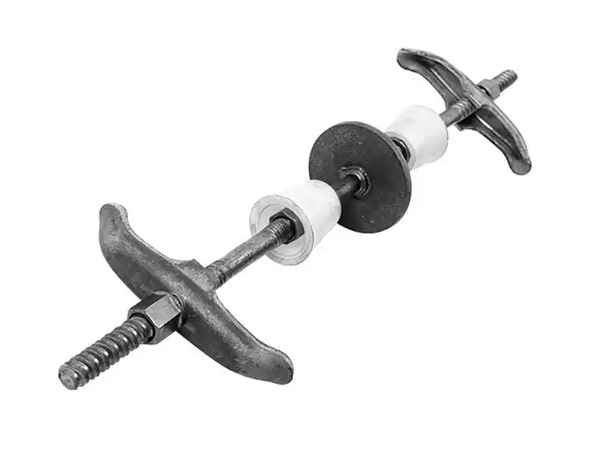- Site Navigation -

Through-Wall Bolt
A through-wall bolt(also known as a through-bolt or anchor bolt)is a type of fastener designed to penetrate entirely through a structure(e.g.,walls,slabs,or panels)to secure objects......
A through-wall bolt(also known as a through-bolt or anchor bolt)is a type of fastener designed to penetrate entirely through a structure(e.g.,walls,slabs,or panels)to secure objects on both sides.Unlike surface-mounted anchors,it provides bidirectional load transfer,making it ideal for heavy-duty applications requiring high pull-out and shear strength.
Key Features&Components
Material:
Typically made of carbon steel(Grade 5 or 8),stainless steel(304/316 for corrosion resistance),or hot-dip galvanized steel.
Design:
Threaded Shaft:Fully or partially threaded for nut fixation.
Sleeve/Washer System:Includes washers,sleeves,or spacers to distribute load and prevent crushing of brittle materials.
Head Types:Hex head,countersunk,or custom designs for flush mounting.
Load Capacity:
Designed to withstand tensile(pull-out)and shear(lateral)forces.
Capacities range from 10 kN to over 100 kN,depending on diameter and embedding material.
Types of Through-Wall Bolts
Mechanical Expansion Bolts:
Use sleeves that expand against the wall under torque for grip.
Example:Wedge anchors,sleeve anchors.
Chemical Anchors:
Inject epoxy resin into drilled holes for adhesion-based bonding.
Use:High-load applications in cracked concrete or hollow materials.
Through-Bolt Kits:
Include long bolts,nuts,washers,and sleeves for modular assembly.
Example:Hollow-wall anchors(e.g.,for masonry or drywall).
Seismic Through-Bolts:
Engineered for dynamic loads in earthquake-prone regions.
Applications
Structural Steelwork:Connecting beams,columns,or brackets to concrete/masonry.
Facade Systems:Mounting cladding,sunshades,or signage to building envelopes.
MEP Installations:Securing pipes,ducts,or equipment to walls/ceilings.
Civil Infrastructure:Bridge railings,tunnel fixtures,and retaining walls.
Installation Process
Drilling:Create a hole through the entire structure using a diamond-core or rotary hammer drill.
Cleaning:Remove dust and debris from the hole(critical for chemical anchors).
Insertion:Place the bolt through the object and the wall.
Fastening:Tighten the nut on the opposite side to achieve design torque.
Curing:For chemical anchors,allow resin to harden before loading.
Advantages
Bidirectional Load Transfer:Distributes stress evenly across the structure.
Versatility:Suitable for concrete,masonry,brick,and composite materials.
Reusability:Mechanical bolts can often be removed and reinstalled.
High Reliability:Minimal risk of pull-out under vibration or dynamic loads.
Limitations
Complex Installation:Requires precise drilling and alignment.
Material Damage:Penetration may compromise waterproofing or insulation if not sealed.
Corrosion Risk:Uncoated steel bolts rust in damp environments.
Technical Standards
ASTM F1554:Standard for anchor bolts used in structural applications.
EN 1992-4:European design rules for fastenings in concrete.
IBC/OSHA Compliance:Required for seismic and wind-load regions.
Selection Criteria
Load Requirements:Calculate tensile/shear forces and safety factors.
Substrate Material:Choose bolts compatible with concrete strength,hollow walls,etc.
Environmental Conditions:Opt for stainless steel or galvanized bolts outdoors.
Accessibility:Ensure tools and space exist for installation.
Safety Notes
Inspection:Check for cracks,corrosion,or deformation before use.
Torque Control:Use calibrated tools to avoid under/over-tightening.
Sealing:Apply waterproofing(e.g.,silicone)around penetrations in exterior walls.
Conclusion
The through-wall bolt is a robust fastening solution for critical structural and non-structural connections.Its ability to transfer loads through entire assemblies makes it indispensable in construction,infrastructure,and industrial projects.Proper selection,installation,and maintenance are essential to ensure safety and longevity.








